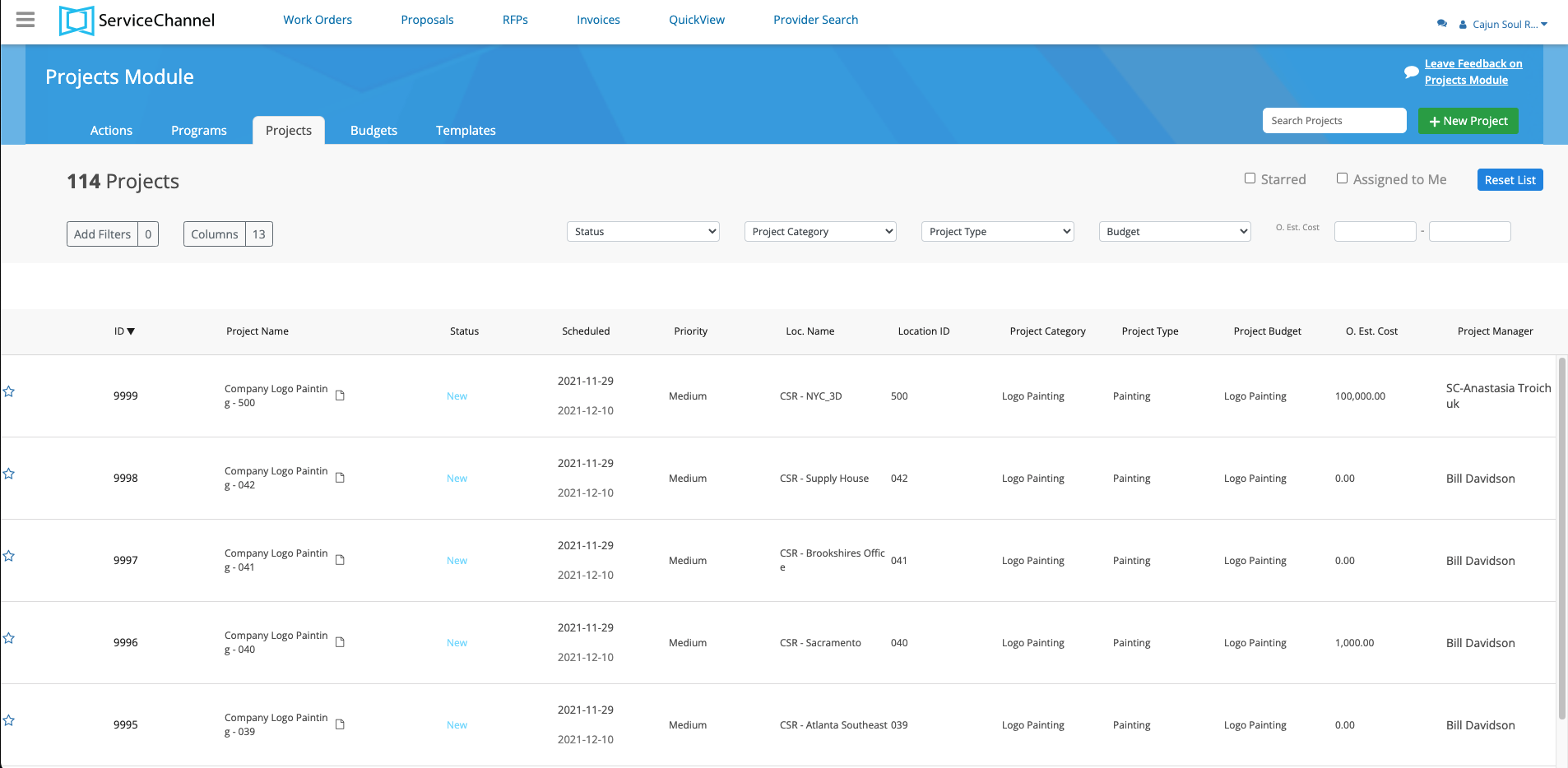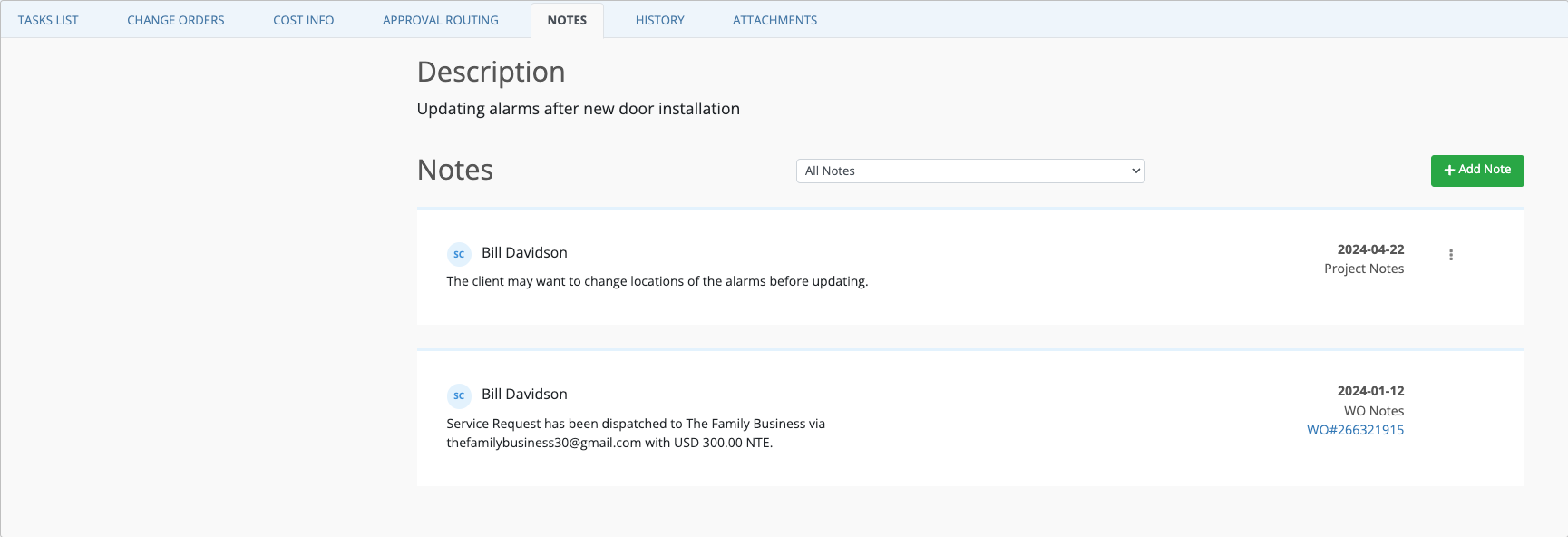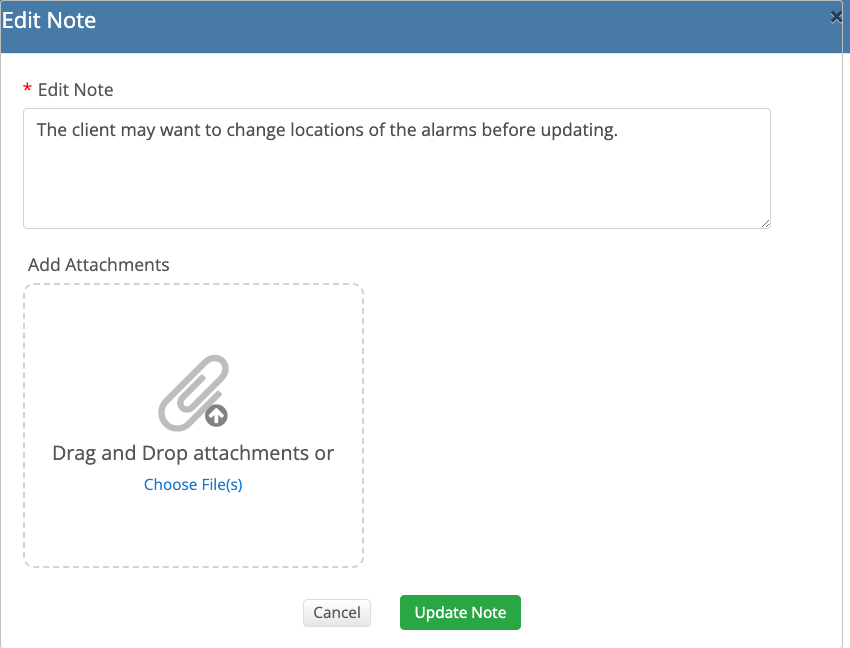/
Navigating a Project
Navigating a Project
Lamont Eddins
Owned by Lamont Eddins
You can navigate through a project in any status. There are various features and functions that allow for managing and supporting a project. Having a full understanding of where to find certain information will enable you to have full control over the Project Lifecycle from New to Completed.

Viewing Inside a Project
Clicking on a project from the Projects Tab allows for viewing all the details relate to that specific project. The first page is Tasks List.

There are 6 tabs that support how a project continues in the Project Lifecycle. Although each tab has its own responsibility, they are also connected to ensure the project has successfully gone through the lifecycle.
7 Tabs in a Project
- Tasks List: Where all RFPs and Work Order tasks are created and held for a project. Request Project Approval button is used once a project has been completely scoped and is ready to be submitted for Approval Cycle status. Using the Add Task button will start the process of adding RFPs and Work Orders. When a Change Order is added onto a project, you will be notified in Tasks List. The project Cost Info is viewable.
- Change Orders: Displays information on tasks that are added once a project is in the lifecycle of In Progress
- Cost Info: Provides the financial information for a project. During the Project Lifecycle, accurate and current financials for a project is updated to reflect the different cost of a project. Invoices for all tasks are shown here as well. Cost Info includes:
- Original Estimated Cost: Amount added when creating a project.
- Committed Cost: Amount for the cost of work within the project.
- Forecasted Cost: Prediction of total cost of project.
- Approved Cost: Amount approved for the project.
- Remaining Project Spend: Contingency amount asked when submitting project for approval.
- Incurred Cost: Total amount of incurred invoices for a project.
- Labor: Total labor cost of work invoiced.
- Material: Total material cost for work invoiced.
- Assets: Total asset cost for work invoiced.
- Other: Other cost associated with the incurred cost.
- Variance Cost: Difference between Original Estimated Cost minus Incurred Cost.
- Approval Routing: Approving or denying the budget for a project and the project itself. This includes any Change Orders that become associated with the project goes above the contingency amount. Approval Routing is required to be used for the Project Lifecycle progression.
- Notes: Add information specific to a project. Any note that is associated with a project will appear. You can add notes throughout the Project Lifecycle. When a note is created within a project, you are allowed to edit and delete the note. The first note that appears is the project description which is added when a project is created. Notes can be:
- Typed Messages
- Attachments
- History: Shows all the activity related to a project in chronological order. Any information, updates, or changes to a project will show in History. You can retrieve information throughout the Project Lifecycle. A project's history can be downloaded into an Excel spreadsheet.
- Attachments: Store all files associated with a project. Users can also review previous uploaded documents by downloading the file. Multiple file types can be uploaded into Attachments. For example, you can upload images or word documents.
⦿ How to Edit a Note Created in a Project
- Click a Project to go inside its details
- Click the Notes link to go inside the notes tab

- Click the 3 vertical dots to open the modal
- Click the Edit link to open the note modal

- Modify the note
- Click the Update Note button to finalize the changes

⦿ How to Remove a Note Created in a Project
- Click a Project to go inside its details
- Click the Notes link to go inside the notes tab
- Click the 3 vertical dots to open the modal
- Click the Delete link to remove the note

System notes created by Service Automation cannot be deleted in a Project.
In this Article
Related Articles
, multiple selections available,
Related content
Managing a Project
Managing a Project
More like this
About the Projects Module
About the Projects Module
More like this
Completing a Project
Completing a Project
More like this
Modifying a Project
Modifying a Project
More like this
Creating a Work Order Task
Creating a Work Order Task
Read with this
Viewing Cost
Viewing Cost
More like this
